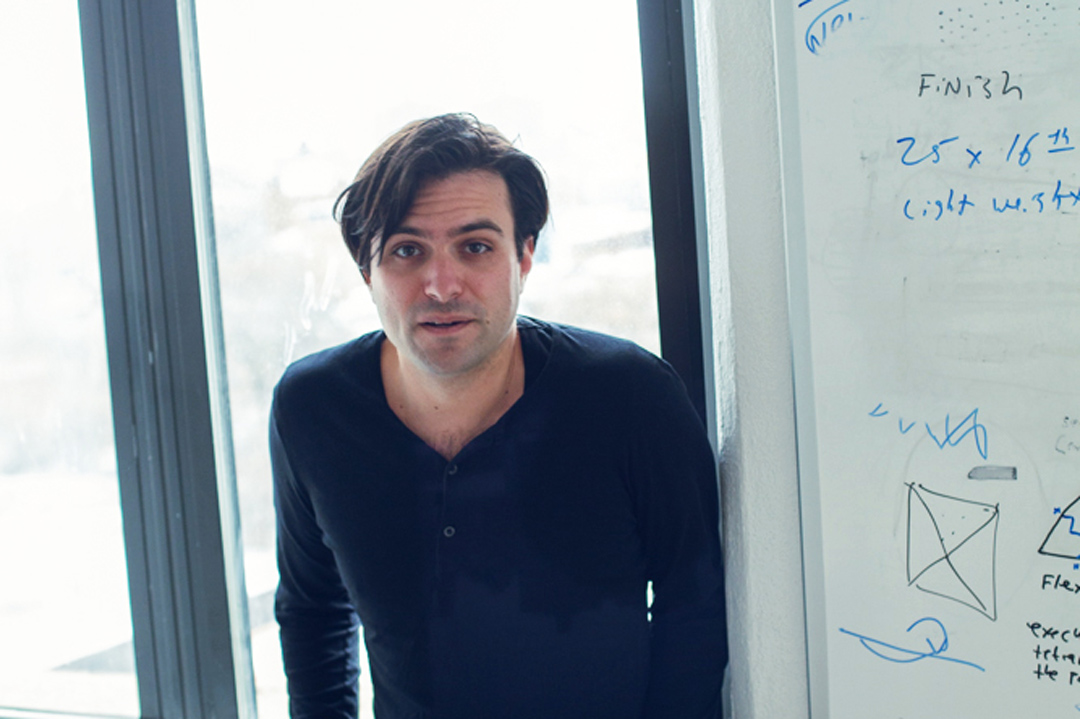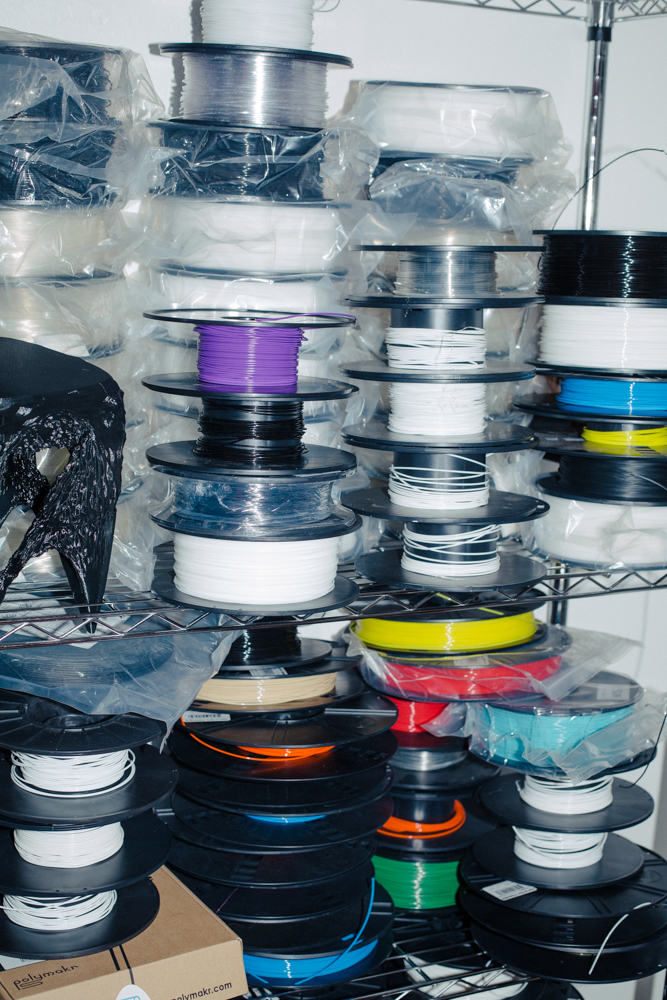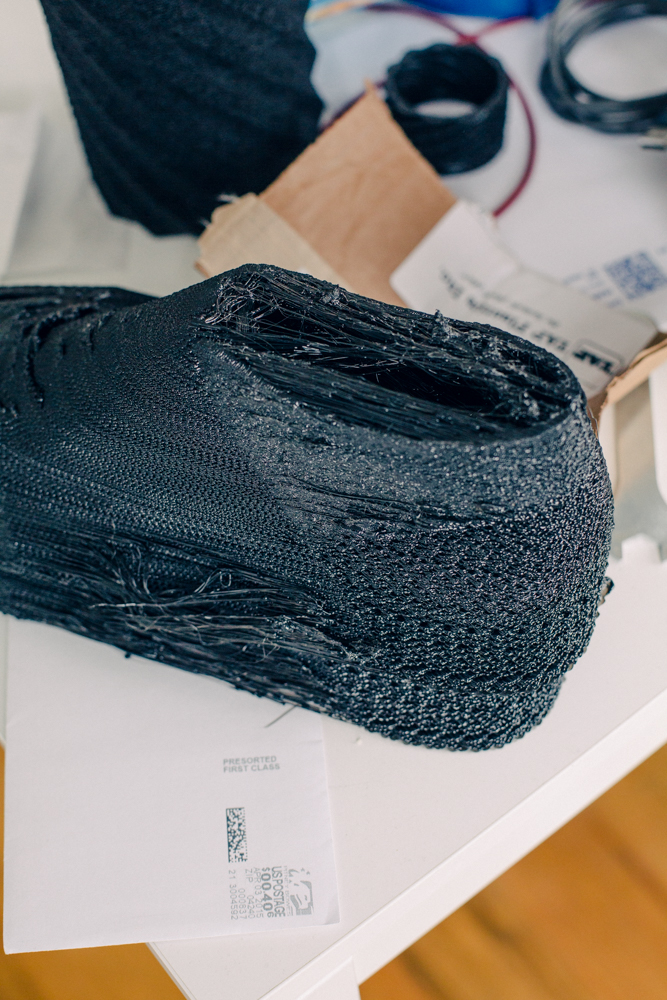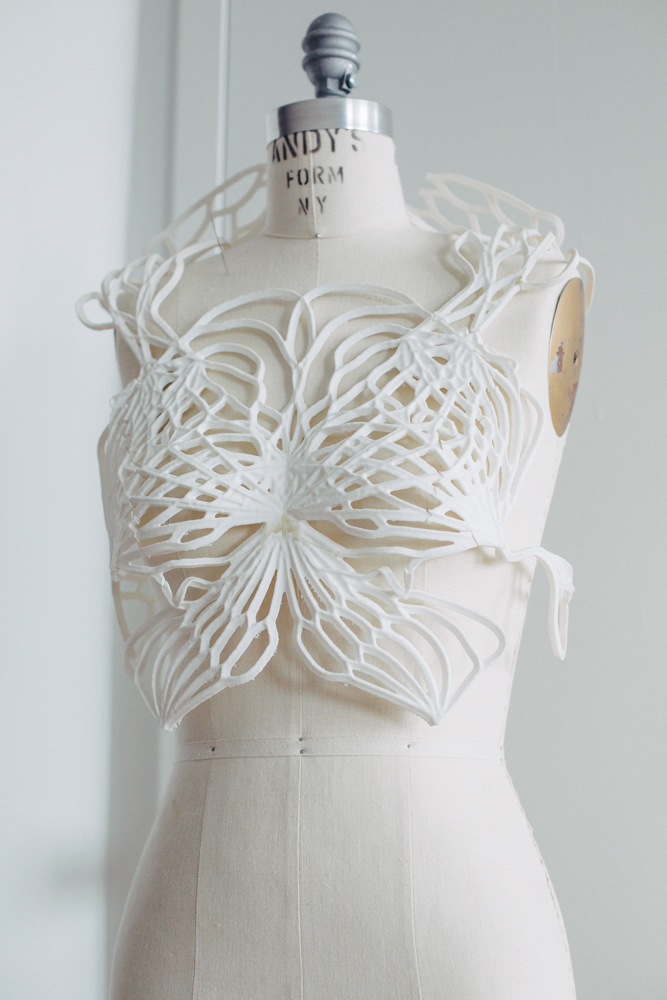Francis Bitonti
Meet the New York-based fashion designer who wants us to swap craftwork for algorithms


Since launching his studio in 2007, Francis Bitonti has become synonymous with fashion and design pieces created using 3D printing
In 2014 he collaborated with Michael Schmidt Studios and Shapeways to create a made-to-measure, 3D-printed dress for the burlesque superstar Dita Von Teese – a futuristic floor-length design made of 3,000 fully articulated joints, and adorned with over 12,000 black Swarovski crystals.
Then in 2014 he launched his Cloud Collection, made up of coral-like home-ware users can buy through downloading a digital file that can then be homemade on your desktop 3D printer. And more recently he partnered with Adobe to launch Molecule shoes made using algorithms.
In September Bitonti will release his first ever collection of luxury goods, including fine jewellery, handbags and shoes. The aesthetic of the collection will build on the undulating, biomorphic structures of his previous work, but with a twist. “The defining thing about this collection is an emphasis on structure and volume,” explains Bitonti. “What 3D printing affords us aesthetically now is that it can change structure.
In the past it’s been confined to surface articulation.” Most people associate 3D printing with crude plastic polymers, but Bitoni is taking advantage of precious metals and leather. Plus, he's introducing an element of co-creation to the new collection. Buyers will be able to personalise their purchases, and interact with a series of algorithms. In other words collaborate with artificial intelligence.

“You know," begins Bitonti. "It’s that idea of setting up systems where you’re not 100 per cent the author." Previously, Bitonti’s adapted mathematician John Conway’s famous 1970s Game of Life algorithm, as well as those used by MRI scanners. "You might get feedback or pushback that you don’t expect. What we’re doing is shifting the idea of the designer from being the one who masterfully crafts a single object to one where a designer masterfully creates the systems. That’s the big shift happening. It’s like you create the brain, not just the body.”
Key to Bitonti’s design philosophy is co-creation; a trend occurring not only fashion, but also all aspects of design. It's something he believes brands need to embrace to remain fully competitive. Moreover he thinks its going to become a necessity. "That’s why I’ve put a lot of emphasis on designing with an algorithm or designing procedurally – because then you’re abstracting design into a system," says Bitonti. "You’re removing material goods and physical things into the space of information meaning they become malleable.”

It’s hard to predict what will constitute a luxury product in the future. Industrial technologies will become obsolete, and thus rarefied, making them luxurious This potential ubiquity of bespoke production will have a massive impact on the luxury industry in general, which relies on obsolescence and rarity of production techniques. “I think it’s going to be a complete redefinition of what luxury is,” he explains. “What’s ultimately going to happen is that the means of industrial production is going to become a scarce resource, so it will no longer be an efficient means of production, it will be decadent. So, it’s hard to predict what will constitute a luxury product in the future. Industrial technologies will become obsolete, and thus rarefied, making them luxurious.”
As time goes on, 3D printers are going to become cheaper and more commonplace, which will in turn lead to the vastly increased manufacturing capabilities of average people. It's interesting to consider whether the technology is sustainable, and whether Bitonti has considered the potential threat it holds to the environment – much of 3D printed matter is made with polymers. “We can’t yet figure out the problems that may occur with 3D printing," says Bitonti. "Everyone will have access to a factory that’s larger than anyone imagined and I don’t know what impact this will have on commerce, or the demands it will put on production.

"When we started the project one online platform had 5,000 printers in their network," explains Bitonti. "They’ve now got 13,000. At the beginning, they did some calculations, and they worked out they could manufacture enough matter to fill the volume of the Statue of Liberty in about a week and a half. That’s just 5,000 printers.” Despite this threat, Bitonti is obviously well aware of the problems. “There are a lot of polymers that aren’t petroleum based, a lot of them are biodegradable, and actually the bulk of polymers used for 3D printing are biodegradable. So we’ll see, it’s really hard.”
Francis Bitonti’s work goes much further than just the aesthetics of the fashion industry. He’s not interested in adding gadgets or decoration to clothes in the vein of wearable tech. Instead, he’s harnessing cutting-edge technology to “instigate radical change”, innovating design and manufacturing from the inside out. As Bitonti explains, what’s interesting about the studio isn’t just its aesthetic, but its philosophy of design: “I see the value of the studio not in the objects that we make, but in our approach to design. Our most valuable asset is our methodology.” Photography by Teddy Fitzhugh


